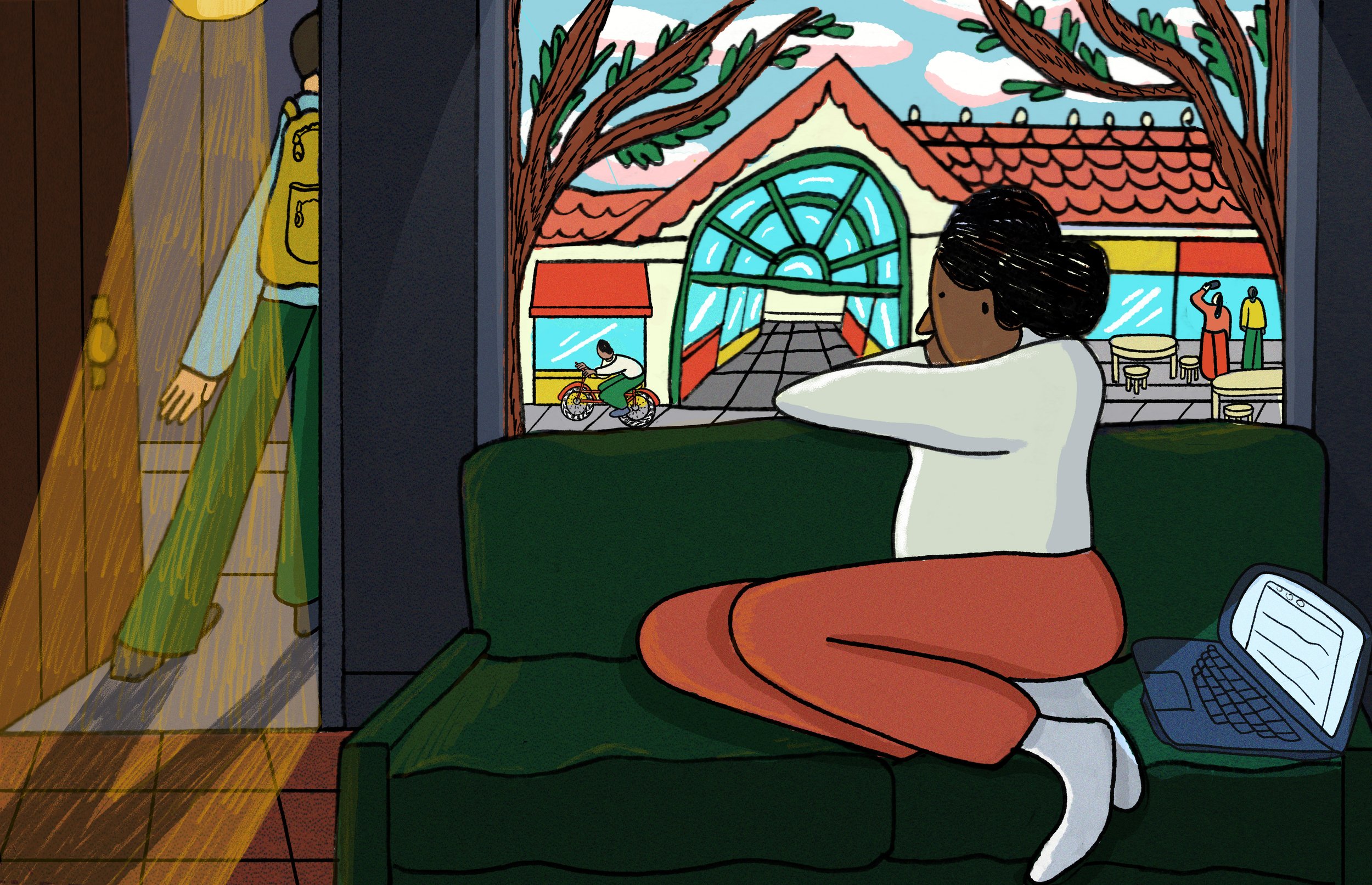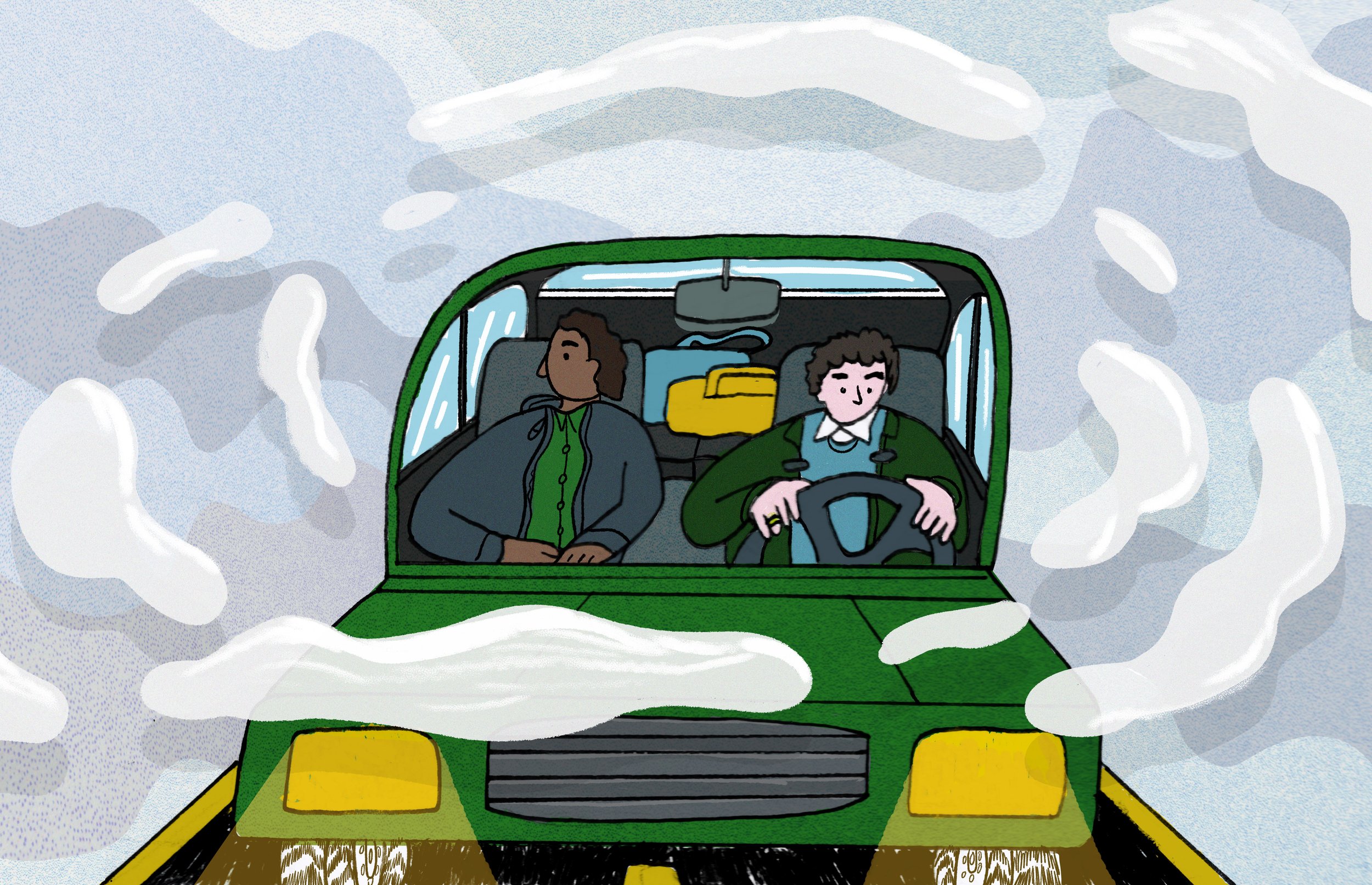9 a.m. on Tana Street

9 a.m. on Tana Street is when a little boy climbs the ladder to the bronze bell of Adaikalanathar Lutheran Church, rising over its stained-glass glory. With all his strength, he pulls the rope nine times, waves of resonance billowing over the second-floor verandah of the yellow house across the street, where a little girl sits. To her, the bell’s ringing seemed to announce: let the controlled chaos begin.
I was that little girl. I spent most summer vacations in Madras at my grandparents’ house on Tana Street. My days were bookended by the nine a.m. and three p.m. bells: lunch fed by patti with a story, card games, street watching, and a tiffin of upma and milky coffee. It was a break from Pondy, where my siblings and I lived with my parents, home to quiet French-named streets running perpendicular into the ocean like lazy rivers.
In contrast, Tana Street was a roaring rapid. The flower sellers with fragrant roses, jasmine, and marikozhundu sat amidst little old ladies swatting flies over pyramids of okra, eggplant, green chilies. Mango season brought out the alphonsos, banganapallis, and the Salem variety, the street exploding with the heady sweet juice. Naaval fruit that stained your tongue, clothes, and teeth purple. Green mango sliced like a fancy Japanese fan, sprinkled with salt and bright red chili powder, ripe guava with exposed ruby red flesh, tiny tart gooseberries—all spread on gunny sacks on the street. The vendors sitting within a foot of each other, trading gossip. The housewives in sarees, the Anglo Indians in frocks, with their curious neither-English-nor-Tamil dialect, a common sight in this part of Madras, and servants shopping for the day’s meals.
Oh, how I longed to be in the middle of it all! But I had to content myself with my perch on the verandah. I was only allowed to go on the street with thatha, holding his hand—the street was crawling with men who would kidnap children and turn them into beggars, I was warned, after gouging their eyes out.
The street took on carnival airs when the entertainers arrived. A man with a snake and a mongoose charged twenty-five paise to watch the ancient enemies in action. I never saw one of them ever clearly winning—the man always packed up just as things got interesting. Elsewhere, the Poikal kudirai dancers hopped comically, a man and a woman fitted through the body of a fake horse, their legs clearly visible, their costumes a riot of colors, dancing to a live orchestra.
But it was the “Puli Attam”—tiger dance— that drew me most to Tana Street. I watched terrified, mesmerized, exhilarated as a man danced, his body in stripes of yellow and black, a tail that had a life of its own, feet skimming the tar road, limbs in graceful undulating arcs, the menace of a tiger in his eyes. Man and beast blurred in my eight-year-old eyes.
Years later, after my grandparents had moved out of that street, a whiff of jasmine or an old tune floating in the wind would take me right back to its drama. But I was no longer sure of what ran underneath the chaos I perceived as a wide-eyed little girl. Were the housewives driving hard bargains for a few paise that meant the difference between starvation and a meal? Was it menace I saw in the tiger dancer’s eyes, or hunger, poverty, and defeat? What I am sure of is this: Tana Street thrummed with an energy that was a metaphor to life itself. Buying, selling, bargaining, gambling, entertaining, living, dying. Predators and prey in an eternal survival dance.
About the Author
Srilatha Rajagopal lives in Florida with her husband of thirty-plus years. She was born and raised in Chennai, India. She loves to read, write, cook, garden, experiment with her iPhone camera, and watch birds in her backyard. She was an IT Project Manager in a former life. She has words in Tree and Stone Magazine and the parenting magazine Grown & Flown, and a photo in Rejection Letters.
Illustration by Victoria Lu.
Edited by Aube Rey Lescure.











